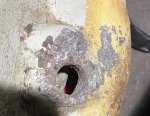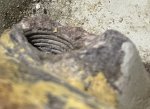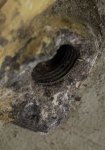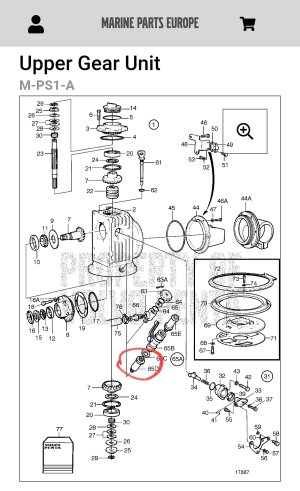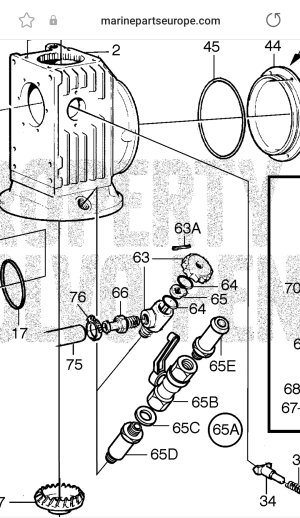Clyde Coastin'
New member
Hey folks,
Having an issue with my Volvo Penta 110s saildrive. I am doing routine maintenance, new diaphragm, shaft seals etc. I am also replacing the old clamping ring with a new unit. During the tear down I noticed that the old brass T style seacock had a good bit of salt deposit around it suggesting a weep / leak (also explaining the corroded clamping ring!)
I removed the old valve with the intention of replacing with a DZR ball valve and to my horror when I cleaned up the tapped hole there isn'y an awful lot of thread left. The top side has 4-5 and the bottom 6-7 as shown in the photos.
My question is what do I do?
Option 1
Use tapered 3/8" DZR 90 degree elbow ->DZR ball valve-> DZR bayonet hose fitting (and lots of thread sealant) torque RFT and pray it seals.
Option 2.
Try and have hole repaired? Not sure whether the upper S-drive is aluminium
Option 3.
New upper S-drive unit (this would really suck as my gearbox is in really good shape mechanically)
Any and all suggestions are welcome
Having an issue with my Volvo Penta 110s saildrive. I am doing routine maintenance, new diaphragm, shaft seals etc. I am also replacing the old clamping ring with a new unit. During the tear down I noticed that the old brass T style seacock had a good bit of salt deposit around it suggesting a weep / leak (also explaining the corroded clamping ring!)
I removed the old valve with the intention of replacing with a DZR ball valve and to my horror when I cleaned up the tapped hole there isn'y an awful lot of thread left. The top side has 4-5 and the bottom 6-7 as shown in the photos.
My question is what do I do?
Option 1
Use tapered 3/8" DZR 90 degree elbow ->DZR ball valve-> DZR bayonet hose fitting (and lots of thread sealant) torque RFT and pray it seals.
Option 2.
Try and have hole repaired? Not sure whether the upper S-drive is aluminium
Option 3.
New upper S-drive unit (this would really suck as my gearbox is in really good shape mechanically)
Any and all suggestions are welcome

